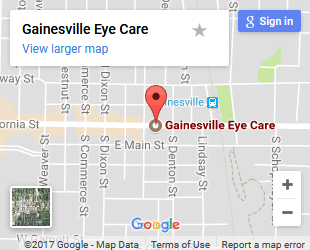The cornea refers to the clear, front surface of your eye. When a corneal transplant is done, officially termed keratoplasty (KP), the central part of the cornea is surgically removed and replaced with a “button” of clear and healthy corneal tissue donated from an eye bank.
According to the National Eye Institute, approximately 40,000 corneal transplants are performed annually in the United States. The overall success rate for keratoplasty is relatively high, yet up to 20% of patients may reject their donor corneas. Aggressive medical treatment with steroids is generally given in response to signs of rejection, and it is often effective at subduing the negative reaction and saving the cornea. At five to ten years after KP surgery, studies report an encouraging success rate of 95% to 99%.
Why are corneal transplants done?
Corneal transplants are typically done when the cornea becomes damaged or scarred in a way that uncorrectable vision problems occur. These types of vision conditions are not resolved by eyeglasses, contact lenses or refractive laser surgery (such as LASIK). Disease or injury is the usual culprit for the vision loss.
Keratoconus is a common reason for needing a corneal transplant. In this degenerative condition, the cornea thins and bulges forward in an irregular cone shape. Rigid gas permeable (GP) contact lenses can treat mild cases by flattening the cornea, yet contacts are not effective when it comes to advanced stages of keratoconus. The National Keratoconus Foundation reports that 20% to 25% of people with keratoconus will require corneal transplant surgery to restore vision. Other corneal degenerative conditions will also result in a need for keratoplasty.
Corneal ectasia is a thinning and bulging of the cornea that sometimes occurs after LASIK or other refractive vision correction procedures. In the event that this happens, a corneal transplant may be needed to restore vision.
Corneal scarring, due to chemical burns, infections and other causes, is an additional reason that a corneal transplant may be indicated. Traumatic injuries to the eye are also commonly responsible.
Corneal Transplant Procedure
Keratoplasty is generally done on an outpatient basis, with no need for overnight hospitalization. Depending upon age, health condition and patient preference, local or general anesthesia is used.
Using a laser or a trephine, this is an instrument similar to a cookie cutter, the surgeon cuts and removes a round section of damaged corneal tissue and then replaces it with the clear donor tissue.
Extremely fine sutures are used to attach the donor button to the remaining cornea. The sutures remain in place for months (sometimes years) until the eye has recuperated, healed fully and is stable.
Recovery from a Corneal Transplant
The total healing time from keratoplasty may last up to a year or longer. At first, vision will be blurred and the site of the corneal transplant may be inflamed. In comparison to the rest of the cornea, the transplanted portion may be slightly thicker. For a few months, eye drops are applied to promote healing and encourage the body to accept the new corneal graft.
A shield or eyeglasses must be worn constantly after surgery in order to protect the healing eye from any bumps. As vision improves, patients may gradually return to normal daily activities.
What happens to vision post-keratoplasty?
Some patients report noticeable improvement as soon as the day after surgery. Yet a great deal of astigmatism is common after a corneal transplant. A patient’s prescription for vision correction tends to fluctuate for a few months after the surgery, and significant vision changes may continue for up to a year.
Hard, gas permeable contact lenses generally provide the sharpest vision after a corneal transplant. This is due to a residual irregularity of the corneal surface. Even with rigid contact lenses, eyeglasses with polycarbonate lenses must be worn in order to provide adequate protection for the eye.
Once the sutures are removed and healing is complete, a laser procedure such as LASIK may be possible and advised. Refractive laser surgery can reduce astigmatism and upgrade quality of vision, sometimes to the point that no eyeglasses or contact lenses are needed.

